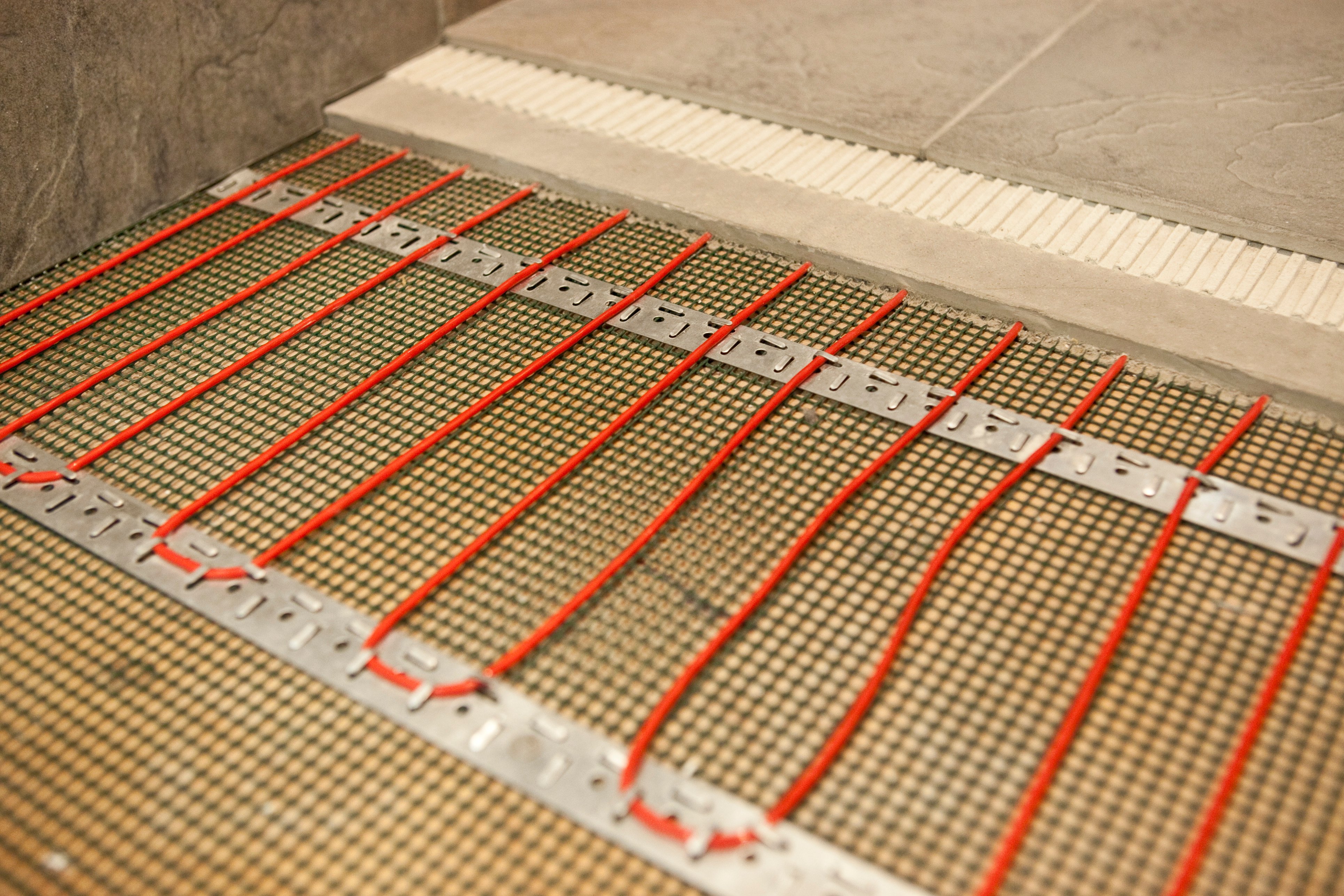

#Radiant floor heating cost to operate hydro vs electric install
Consumers cannot install natural gas equipment themselves. All natural gas equipment and appliances must be installed by a licensed gas fitter, who is usually a heating dealer.Replacement natural gas furnaces are required to have an AFUE rating of at least 92%. Note that a heat pump will be more complex to compare, and may well be cheaper on average to operate over the entire year.Īnother thing to think about is that electric rates tend to be more stable over time than propane rates, so propane is less predictable in terms of potential future energy costs than electricity.Natural gas furnace - high efficiency (92% AFUE) Propane heat is cheaper than electric resistance heat in your case. That means it would cost 86.6 cents to get the same amount of heat from electricity at your rate as 69.8 cents of propane would buy. Assuming you have a 90% efficient propane furnace, you get 21,330 useful BTU per liter of propane, so one liter of propane is equivalent to 6.25kw/h. 1kilowatt hour of electricity is equivalent to 3,412 BTU. Where heat pumps don’t work efficiently is where the outdoor air temperature is so low on average that the heat pump has to use electric resistance auxiliary heat instead of running the heat pump part.ġ liter of propane contains 23,700 BTU. It will take the same amount of thermal energy regardless of the source, with the exception being that heat pumps move heat instead of creating it, like an air conditioner in reverse.

If you put in less heat, the temperature inside drops. If you put in more heat than is lost, the temperature rises. Regarding energy use, all your heat source is doing to maintain a temperature inside your home to to put as much thermal energy into your home as is lost through the walls, windows, and any air leaks. You don’t mention your climate zone, so it’s difficult to estimate how well a heat pump will work for you. I guess what I’m asking is, if the slab is up to temperature, and the home requires 20,000BTU/h to heat, surely that doesn’t mean that the boiler needs to inject 20,000 BTU/h to meet the load? It’s “top up” needs would have to be less than the mini-splits, no? And if that’s correct, then would this mean that an operational cost comparison of the two systems might be too difficult to theoretically calculate? What I am unsure of is, and intuitively speaking, once the slab has heated to temp, wouldn’t it have such a significant thermal mass that it wouldn’t take much additional heat to maintain the room temperature or heating load? I mean, relatively speaking to the mini-split? By these rates, and running the math with available conversion factors, I think that the mini-split would cost nearly half as much to run as the hydronic floor heating. I would like to do an operational cost comparison of both systems. Cold climate mini split, non-ducted, with an HSPF of 10 BTU/Watt-hour Propane fueled hydronic radiant floor heating, with a condensing tankless water heater with high efficiency orĢ.

$0.698/litre is the cost per litre of propane that I was quoted todayĮssentially, I would like to determine which system would consume more energy to heat the home to 20C in a cold climate?ġ. $0.1385/Kwh is the average winter cost of electricity in my area

1300 square foot home, slab on grade, with a heat loss of 20,000 BTU I could use some input on a comparison I am doing being two systems.


 0 kommentar(er)
0 kommentar(er)
